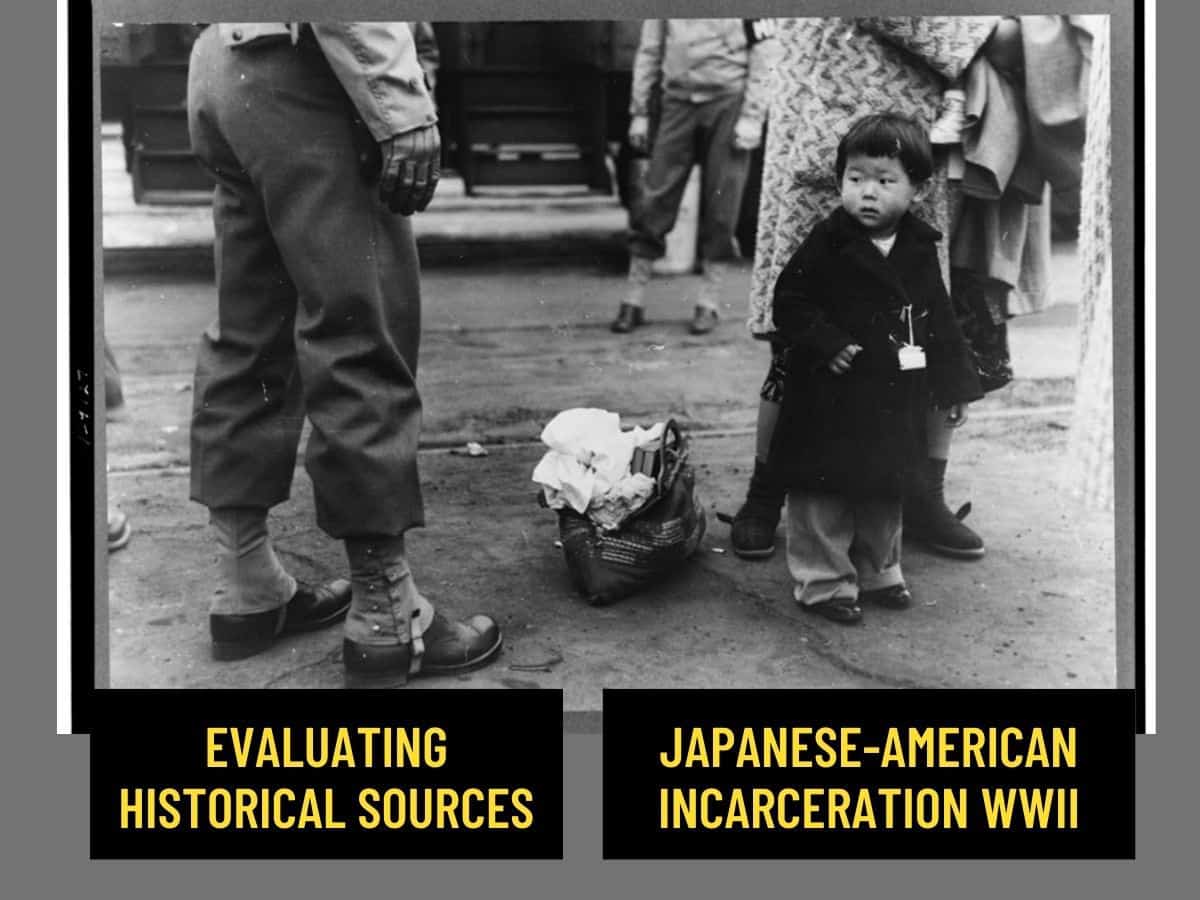Overview
This class will begin a multi-class examination of historical thinking skills based on the work by Stanford History Education Group. (SHEG). We will focus on four key historical thinking skills – Sourcing, Contextualization, Corroboration and Close Reading. See Historical Thinking Chart (pdf in English and Spanish at SHEG).
For content, in this class session we will examine the WWII incarceration of Japanese Americans.
Class Session
Class will open with some introductory activities both evaluating the work from last week’s class and the assigned flipped lesson Who is the historian in your classroom? Created at TEDed.
We will have an initial review of the topic using the multitouch iBook, Portland’s Japantown Revealed (free at iTunes).
Students will then use a modification of this evaluation guide to compare the two videos below. Students will collaborate via VoiveThread
How does the video say it?
- Who made these videos and what was their purpose in making the videos?
- What was the essential message of each video? What makes you think that?
- What audio and visual elements are used to support the message of the video? Cite specifics.
- How effective are these videos in communicating their message?
How does the video connect to me?
- How is each video a product of its time? Do the videos rely on fact or opinion? Do they appeal to the viewer’s reason or emotion? Cite specifics
- How do these videos communicate in ways that would differ from a textbook?
- What is my reaction to the videos and the treatment of Japanese Americans during World War II?
- How might others see these videos in different ways than me?
Assignment 4: Design a Sourcing Activity | Sourcing 21-A4
Design an activity that gives students a chance to consider the historical thinking skill of sourcing. You could create a single “comparative” activity using both documents. Or create two separate sourcing activities.
Your post should include
- Featured image and clever title
- At least two documents to be considered – could include images, videos, or short text passages)
- Background for documents, as needed.
- Archival sources of documents (be sure it’s in public domain) with active hyperlink back to source.
- At least 3 questions for user to answer. Could be separate questions for each documents or collective questions for both.
- Instructional goal(s) plus “model” answers and / or student insights.
Sample Sourcing Activity (using only one document)
Background information: Students will use this photograph to explore the reliability of the source. In this case, the photograph was taken by a famous American travel writer and photographer, Frank G. Carpenter. It appears to be staged with a “western” salute.

Questions for students
Question 1: Why do you thing that Frank Carpenter created this photograph and what might have been the intended audience?
Question 2: What is one feature of the photo that might lead you to question its reliability? Explain your reasoning.
Question 3: What is one thing you would want to know about either Frank Carpenter or how he took this photo to better determine its reliability?
Instructional Goals and Model answers:
Students must reason about the content of the photograph and the circumstances of its creation to evaluate its reliability as evidence.
Question 1: I would guess he intended to sell the image to American market. He might hope that the exotic nature of the chief would appeal to American stereotypes. “Look how primitive African culture is – a half naked chief!”
Question 2: I would expect that most students would realize that the “salute” is a western gesture and might not be authentic to Zulu culture.
Question 3: Asks students to think about what information might help corroborate the evidence in the photograph. I would expect they might want to find out if Carpenter had any formal training as an anthropologist or was just out taking travel photos to sell.

